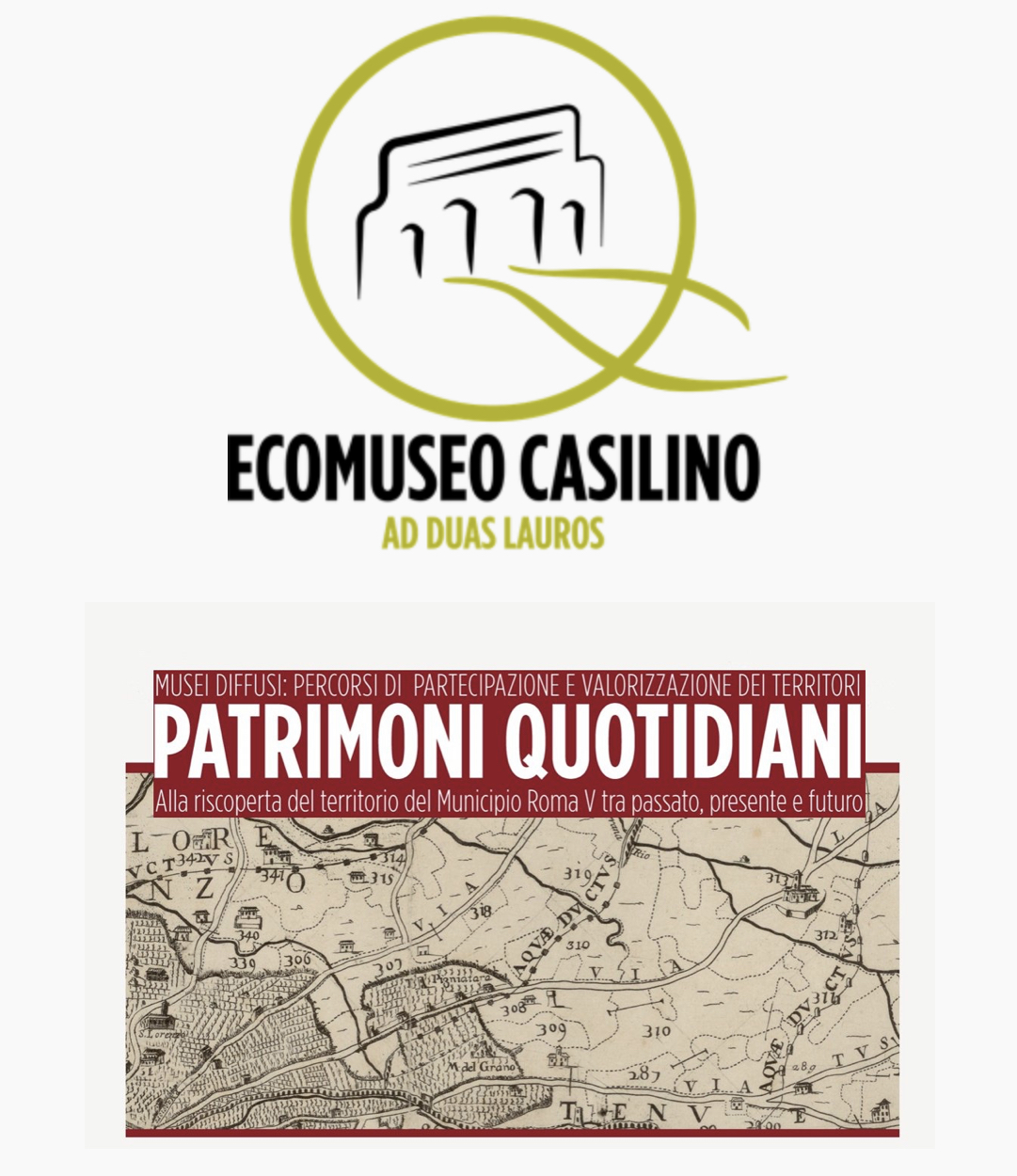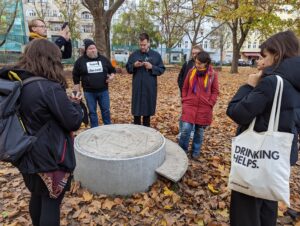Ecomuseo Casilino
COLLABORATIVE DECISION-MAKING
The concept of Ecomuseum emphasises the link between the museum and its social and environmental context. Ecomuseums encourage sustainable community development through local organisations that promote the conservation of heritage related to a geographical area.
Short summary of the practice
The Ecomuseum is a cultural institution that represents what a territory is, and what its inhabitants are, starting with the living culture of the people, their environment, what they have inherited from the past, what they love and what they wish to show their guests and pass on to their children.
Goal of the practice
The EcoMeuseo Casilino (Rome) launched an app and a map, where every citizen can share their or their family, company story in the neighbourhood.
Target group
All citizens
Number of participants: Unlimited
Age of participants: Adults and Youth, 16+
Materials
- Phone
- Internet access
Method settings
The presented case: Casilino ad Duas Lauros Ecomuseum is an area that extends from Porta Maggiore to via Tor De Schiavi and from Quadraro Vecchio to Villa Gordiani.
However, the application can be extended to any other places.
Duration
Time needed to consult the app.

Preparation
A proper preparation for the learners is needed.
Step by step guide
The Ecomuseum is a cultural institution of the territory based on a pact with which a community undertakes to take care of an area. In particular, a pact means an agreement that is generally shared and not imposed from above by the authorities. The protagonists are not only the institutions, since their role must be accompanied by a broad involvement of citizens and local communities in caring for, preserving and enhancing, for today and for the future, the cultural, environmental and natural heritage. This is done to increase rather than consume its value. The territory is understood in a physical sense, but above all as the history of the people who live there and the relationships and material and immaterial signs left by those who have inhabited it in the past.
The other distinctive element of the Ecomuseum is the concept of widespread musealisation over a territory, even a vast one, unlike normal museums that instead concentrate their activities in a single physical structure. The instance of the urban Ecomuseum is therefore an act of positive exercise and re-appropriation of the rights of citizenship to participate in and influence decision-making processes concerning urban planning choices and the transformation of the urban environment.
To sum up, the constitutive elements of an Ecomuseum are:
Pact: means sharing objectives and strategies, not prohibitions or coercive rules.
Community: means broad participation because institutional initiative alone is not enough.
Care: it means loving and enhancing an area, handing it over to future generations improved, using it with a view to the long term and not hit-and-run.
Territory: means space but also and above all, history, stories, material and immaterial culture, nature and emotions.
The Ecomuseum is a dynamic process in which a community conserves, interprets and enhances its heritage in the function of a shared and sustainable development.
Expected output
Introduce new people to the concept of the Ecomuseum.
DOs, DONTs and ethical considerations of the method
The Ecomuseum encompasses four essential elements: pact, community, care, and territory. The pact signifies a shared vision and goals, emphasizing collaboration and the absence of restrictive rules. The involvement of the community is vital, as institutional initiatives alone cannot effectively preserve and enhance the heritage. Care involves a deep sense of love and responsibility for the area, ensuring that it is passed on to future generations in an improved state. The territory is not merely physical space; it represents the rich history, stories, material and immaterial culture, nature, and emotions associated with the community.The Ecomuseum operates as a dynamic process, wherein the community actively conserves, interprets, and enhances its heritage in alignment with shared values and sustainable development. It enables community members to develop a sense of ownership, pride, and belonging while fostering a deeper understanding and appreciation for their cultural and natural surroundings. The Ecomuseum acts as a vehicle for sustainable community development, promoting long-term engagement, and fostering a harmonious relationship between people and their environment.
Change the method brings to the communities
The practice actually is hovering between citizen control, as in the example of this neighbourhood, and delegated power, in the case when an EcoMuseo is set up by the municipality.
Adaptation/Application of the method
As the practice makes the collective heritage visible and helps citizens to co-create future scenarios, the method helps to change the mindset but also the physical urban planning of the neighbourhood. Understanding the heritage, the people create a sense of belonging, which includes as well migrants and newcomers, as they can add their own lived story to the collective narrative of the area. This bottom-up approach initiated a process of neighbourhood and social revitalisation process, which is not otherwise institutionalized in Rome. By training future guides, the practice helps to qualify low-skilled workers and creates perspectives for otherwise marginalized groups.
Credit, References, and Resources
The link to the EcoMeuseo Casilino – http://www.ecomuseocasilino.it/
Ecomuseum Concept: A Saskatchewan Perspective on “Museums without Walls” – https://heritagesask.ca/pub/Resources/Publications/Ecomuseum%20Concept%20(09%202016).pdf
Smart Ecomuseum App for Efficient Management of Local Resources, International Journal of Multimedia and Ubiquitous Engineering, Vol.9, No.3 (2014), pp.41-50, http://dx.doi.org/10.14257/ijmue.2014.9.3.05 – https://citeseerx.ist.psu.edu/document?repid=rep1&type=pdf&doi=3af98020e1e1fd7ed40ecd9731118d8925d772da
Personalization in Digital Ecomuseums: The Case of Pros-Eleusis, March 2023, Applied Sciences, 13(6):3903, DOI: 10.3390/app13063903 – https://www.researchgate.net/publication/369401570
Photo sources: http://www.ecomuseocasilino.it/, date: 20.11.2023
Related posts

Active Citizenship
Active citizenship in this context refers to the power of individuals or small resident groups to proactively engage in community mapping exercises for improving their city or neighborhood.

ArcGIS Online
ArcGIS Online provides a cloud-based mapping and analysis solution. It is used to create interactive web maps, analyse data, share and collaborate.

Civic Alert
Civic Alert is a platform designed to facilitate communication between citizens and governments. Citizens can use their mobile application to report problems in the city to the authorities in three easy steps.
